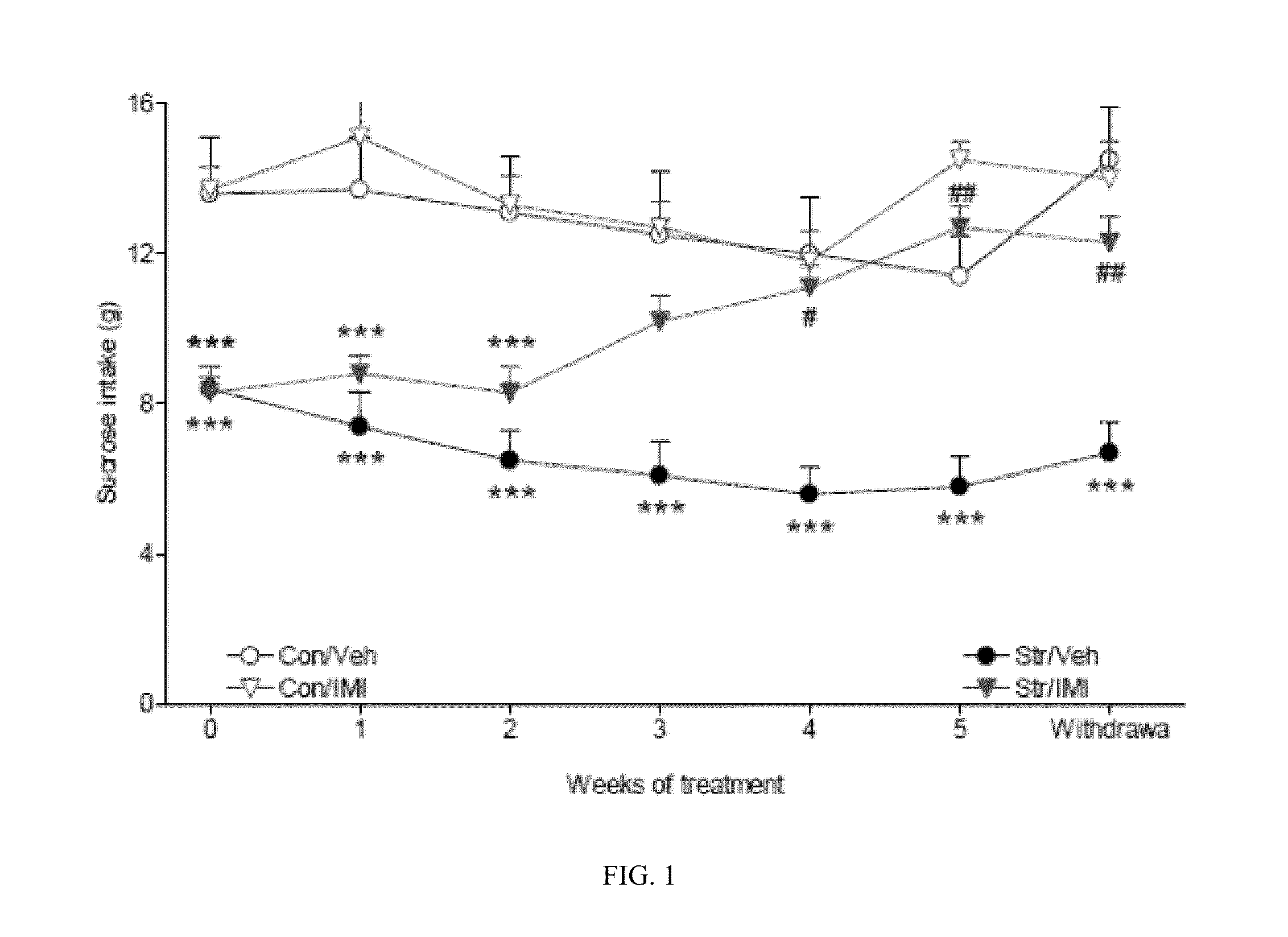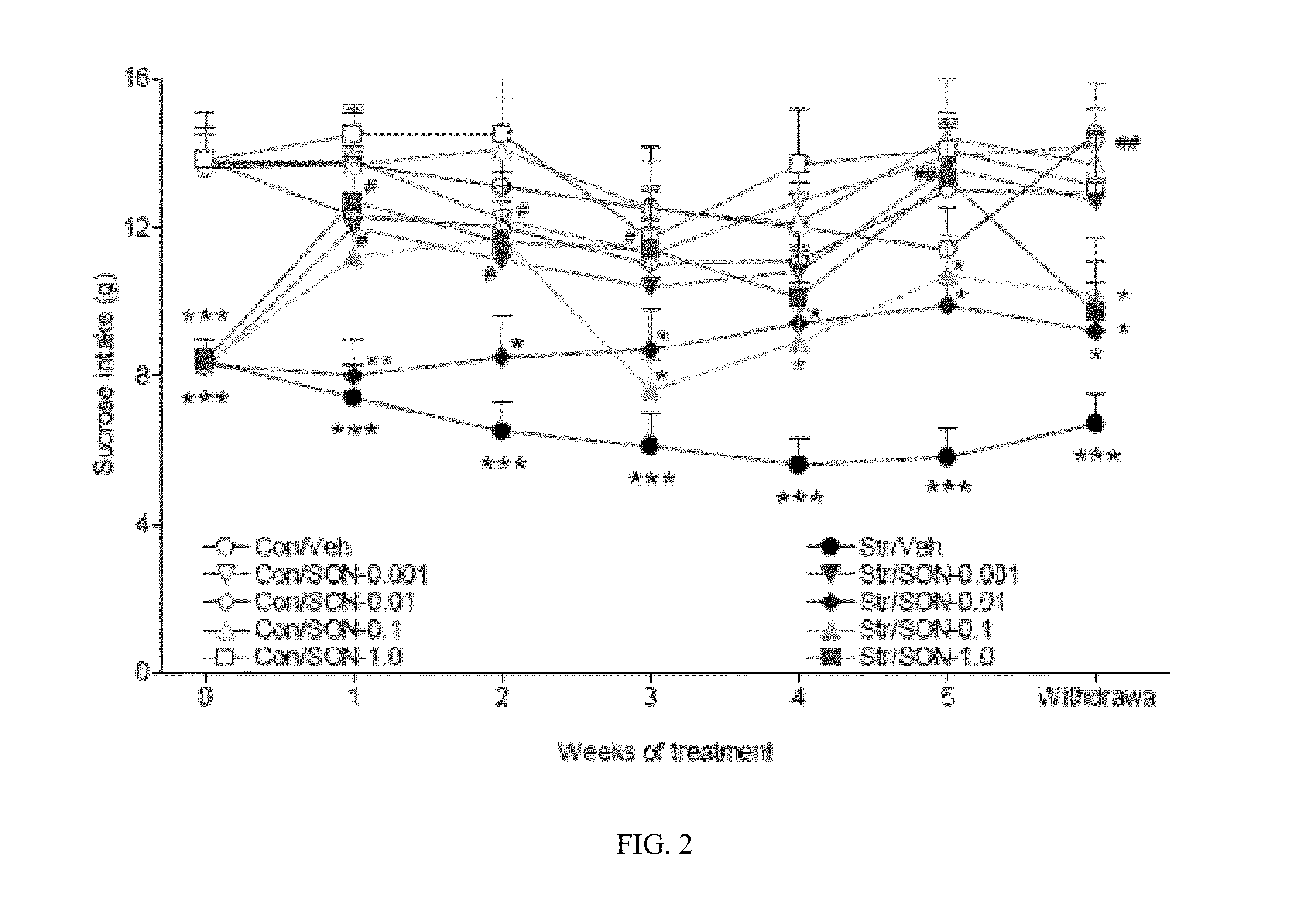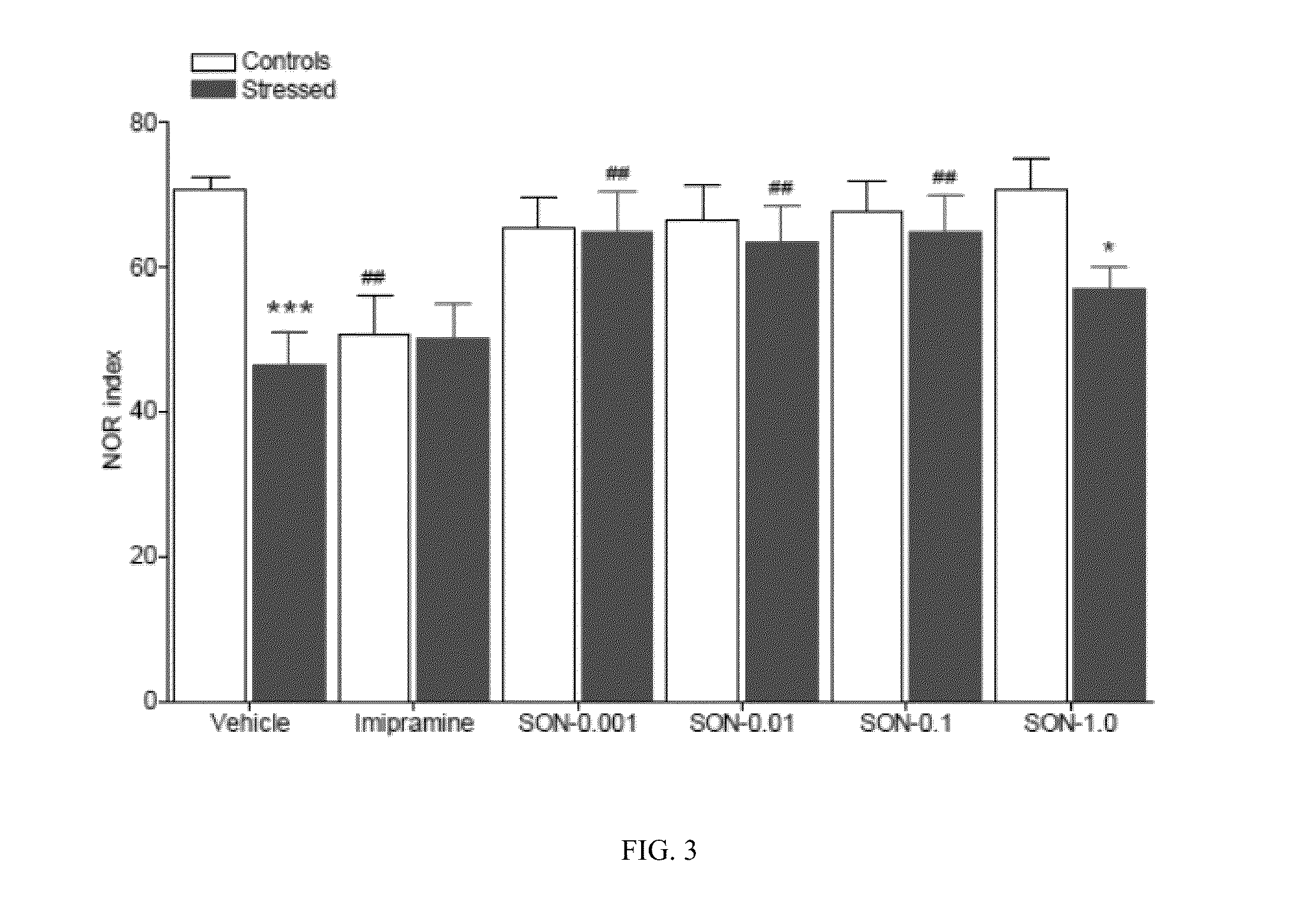Methods of use of phenoxypropylamine compounds to treat depression
- Summary
- Abstract
- Description
- Claims
- Application Information
AI Technical Summary
Benefits of technology
Problems solved by technology
Method used
Image
Examples
example 1
Effect of SON-117 on Sleep Parameters in Healthy Volunteers
[0157]In this study, certain pharmacodynamic sleep parameters predictive of antidepressant activity were monitored and measured. The positive comparator (escitalopram, Celexa) behaved as expected. Three doses of SON-117 were tested (1 mg, 3 mg, 7.5 mg). Each dose exhibited a different pharmacodynamic profile than escitalopram and placebo. In addition, the lowest dose of SON-117 (1 mg) demonstrated a different profile than the two higher doses of SON-117. In an embodiment, SON-117 affected sleep. In an embodiment, SON-117 affected REM sleep.
[0158]While not wishing to be bound by any particular theory, one possible mode of action (among other possible mode of action) may be that higher doses of SON-117 contact and / or affect receptors that low doses of SON-117 do not modulate.
example 2
Polysomnography
[0159]Forty-four (44) subjects were tested in a sleep study, where 23 subjects were dosed with SON-117 in amounts of 1 mg up to 7.5 mg; 12 were given a placebo; and 8 were given escitalopram at a dose of 20 mg. Sleep was recorded in individual sound-attenuated and comfortably furnished bedrooms. During bedtime hours subjects were recumbent and the lights are turned off. The polysomnographic montage consisted of 4 EEG channels (C3A2, O1A2, C4A1, and O2A1), bilateral electro-oculograms, and 2 submental electromyograms. The different sleep parameters were derived with the Hypnos software from the visual scoring of the recordings at 30 sec epochs according to Rechtschaffen and Kales (1968) rules. Sleep continuity parameters comprise both sleep initiation and sleep maintenance variables. Sleep architecture parameters, which include REM sleep parameters, comprise stages distribution variables documenting duration and proportion of the different sleep stages and sleep profil...
example 3
Measurement of Neurotransmitters in Rats Treated with SON-117
[0161]The aim of the study was to evaluate, using microdialysis, the effects of an intraperitoneal (I.P.) administration in rats of three different doses of SON-117 on dopamine and its metabolites, serotonin and its metabolite (5-HIAA), and norepinephrine levels in prefrontal cortex.
[0162]Thirty-two adult male Wistar rats were used for the whole study (4 groups of eight animals planned for the study, Table 1).
TABLE 1Experimental groups of SYN 7849fNumber ofanimals planned inDoseroute ofGroup numberthe study groupCompound(mg / kg)administrationDialysate sampleDosageT-1 h 30-T-1 hDopamine and metabolites18Citalopram10I.P.T-1 h-T-30 min,(HVA and DOPAC),T-30 min-T0,5HIAAT0-T30 min,Norepinephrine, SerotoninT30-T1 h,28SON-1170.1I.P.T1 h-T1 h 30,T1 h 30-T2 h,T2 h-T2 h 30,T2 h 30-T3 h,38SON-1170.3I.P.T3 h-T3 h 30,T3 h 30-T4 h,T4 h-T4 h 30,T4 h 30-T5 h,T5 h-T5 h 30,48SON-1173I.P.T5 h 30-T6 h,T6 h-T6 h 30,T6 h 30-T7 h5HIAA, 5-hydroxyi...
PUM
| Property | Measurement | Unit |
|---|---|---|
| Time | aaaaa | aaaaa |
| Time | aaaaa | aaaaa |
| Mass | aaaaa | aaaaa |
Abstract
Description
Claims
Application Information
 Login to View More
Login to View More - R&D
- Intellectual Property
- Life Sciences
- Materials
- Tech Scout
- Unparalleled Data Quality
- Higher Quality Content
- 60% Fewer Hallucinations
Browse by: Latest US Patents, China's latest patents, Technical Efficacy Thesaurus, Application Domain, Technology Topic, Popular Technical Reports.
© 2025 PatSnap. All rights reserved.Legal|Privacy policy|Modern Slavery Act Transparency Statement|Sitemap|About US| Contact US: help@patsnap.com



